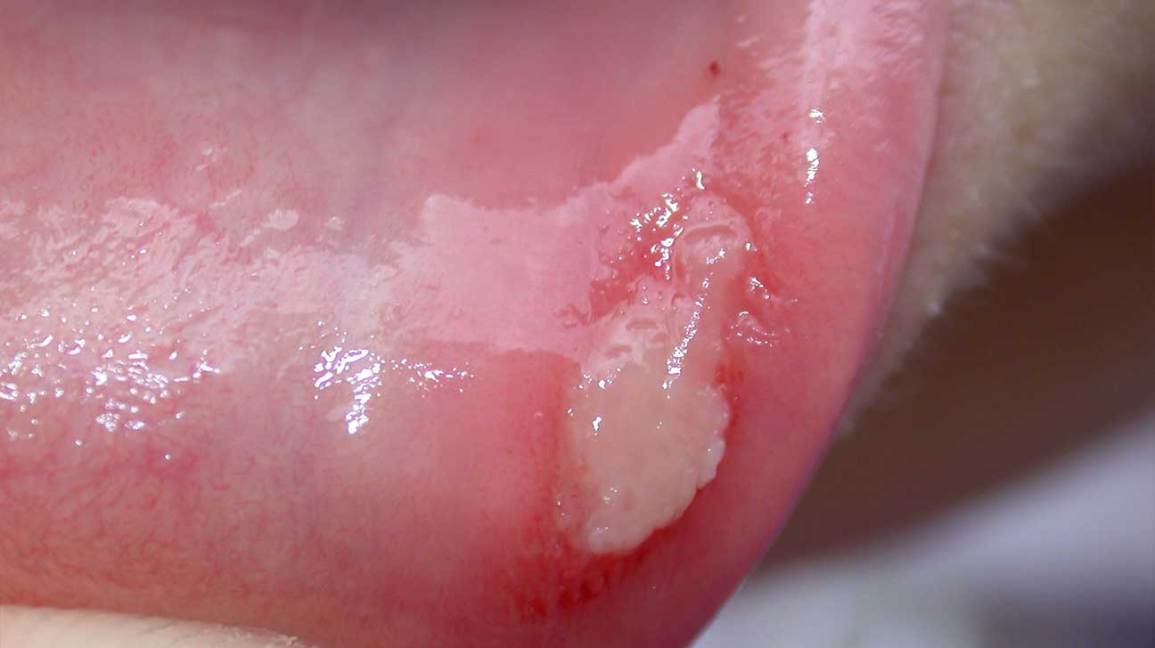The appearance of ulcers in the mouth and genitals may be due to Behçet’s disease, an inflammatory disorder of unknown cause in which ocular involvement marks its severity.
Behcet’s disease is an inflammatory disease or syndrome of unknown cause that can affect various organs. However, the most characteristic manifestation is the appearance of aphthous ulcers (sores or ulcers) in the mouth and genitals. Inflammatory eye involvement is a common symptom that can be very serious and cause irreversible damage to the affected person’s visual acuity.
In addition to ulcers in the mouth and genitals and inflammation of any part of the eye, there are usually various skin lesions. On the other hand, neurological, joint, arterial and vein, and gastrointestinal symptoms can occur.
Behçet’s disease has a chronic course with episodes of inflammation and canker sores alternating with other periods without symptoms. That is, its evolution is intermittent, with periods of remission and exacerbation over the years. It is essential to detect symptoms in time to treat them properly because, above all, ocular involvement can be severe and have significant repercussions on visual ability. No test makes the diagnosis easy. However, it can be addressed with drugs focused on reducing inflammatory processes and regulating the patient’s immune system.
Although it has always been considered a disease more typical of men, it is just as frequent in Western countries – or even more – in women than in men. It rarely begins in childhood or beyond the age of 60. It occurs mainly in the ancient Silk Road (Middle East, Southeast Asia, and Japan) and the Mediterranean in 1-10 of every 100,000 people. It is, therefore, a relatively rare disease.
Causes of Behçet’s disease
Behcet’s disease is a syndrome that was previously considered autoimmune. Autoimmune diseases are those in which the body makes antibodies that attack parts of the body, known as autoantibodies.
At present, Behçet’s disease is considered an autoinflammatory disease, although some people think it is like a mixture of both types of disease. Autoinflammatory diseases are those in which inflammation episodes occur in different parts of the body and are not produced by stimuli such as tumors, infections, or autoantibodies.
In Behçet’s disease, vasculitis occurs the inflammation of arteries and veins of different sizes, not produced by autoantibodies. However, part of the symptoms is probably due to the exaggerated tendency to inflammation in these patients’ bodies.
Behçet’s disease is considered a multifactorial production mechanism (it is due to several causes). It is thought that there are people who are genetically predisposed to developing this disease. There is an allelic group of the major histocompatibility complex, HLA B51, whose presence increases the risk of suffering from the illness between 1.3 and 16 times compared to the general population. Other genetic determinants have also been linked to the disease. Still, it is not a hereditary disease.
A person with an increased genetic predisposition to suffer from Behçet’s disease can occur without an apparent cause. However, it is thought that some environmental stimuli can trigger it. It is believed that infection by a virus or bacteria of the streptococcal type would start the autoinflammatory process, which would persist even after the infection has resolved.
This initial stimulus would activate the cellular mechanisms and the production of pro-inflammatory substances that generate the symptoms of Behçet’s disease. There would be direct damage by neutrophil-type white blood cells and later by T and B lymphocytes. The latter would mainly damage the vascular endothelium, which explains the involvement of so many different organs.





